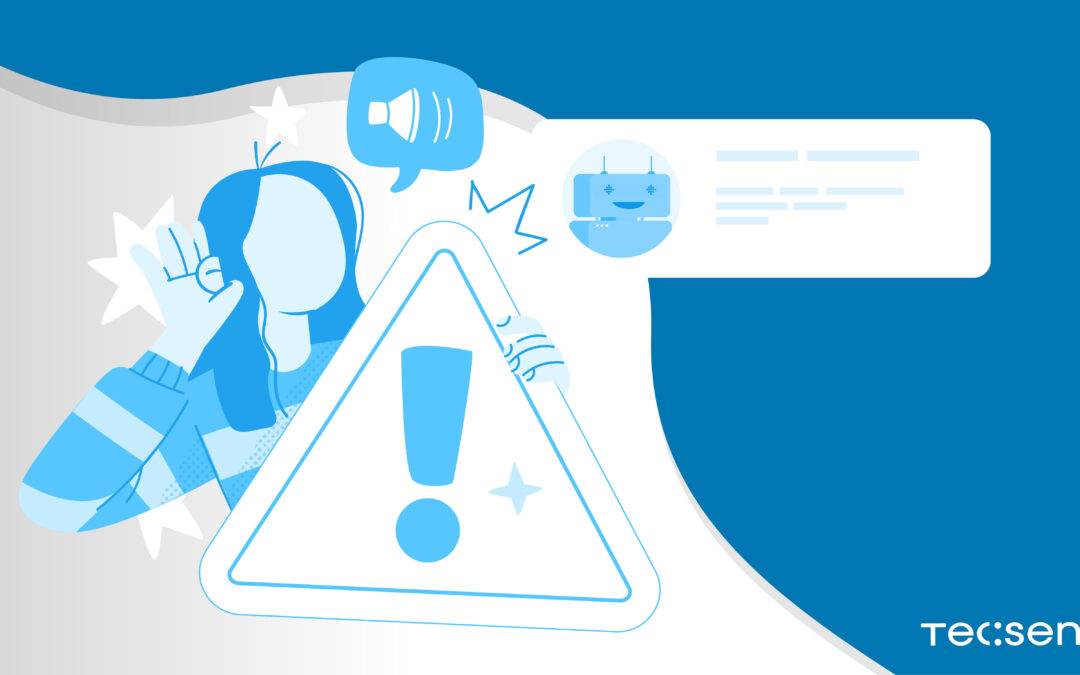Chatbots, a fundamental tool to improve customer service, optimize response times and provide 24-hour support. However, not all chatbots achieve these goals, and in many cases they can negatively impact the user experience. In this article, we explore the 5 most common mistakes when implementing chatbots and how to avoid them to get the most out of this powerful tool.
5 Most Common Mistakes When Implementing Chatbots and How to Avoid Them
1. Overly basic or complex configurations
A frequent mistake is to implement a chatbot that does not find the balance between simplicity and functionality. If the bot is too basic, it can be frustrating for the user who expects more advanced solutions. On the other hand, a chatbot with too many features or complex configurations can be difficult to use and confuse the user.
How to avoid it?
Define your audience’s needs and the chatbot’s goals well. For simple cases, such as solving frequently asked questions or basic queries, a simple chatbot will suffice. If you need more advanced features, make sure the design and user experience are intuitive, so anyone can interact without any hassle.
2. Not defining a clear goal
Each chatbot must serve a specific purpose. A common mistake is to implement it without a clear objective or with an overly broad approach. This often creates confusion for users, as it is not clear how the bot can help them.
How to avoid it?
Clearly define the purpose of the chatbot from the start. If your chatbot is designed to answer frequently asked questions, make sure that the majority of queries are directed to that topic. If it’s going to be used to guide users in purchasing products, optimize it to fulfill that specific role. Having a defined goal not only improves the user experience, but also makes it easier to integrate the chatbot into the overall customer service flow.
3. Lack of human tone in the answers
Users expect close and friendly interaction, even if they’re talking to a machine. A chatbot that responds robotically or impersonally can make users feel disconnected, reducing the effectiveness of the interaction.
How to avoid it?
Implement a conversational tone in the chatbot’s responses. Use natural phrases, recognize emotions, and, if possible, offer customization options in tone. Some companies have started using advanced artificial intelligence to provide their chatbots with empathy in their responses, which improves the user experience. Incorporating greetings, goodbyes, and courtesy phrases also helps make the interaction more friendly.
4. Ignore interaction data
Many businesses forget to analyze the performance of their chatbot. This can lead to a static and poorly optimized experience that does not respond to the real needs of users. Not leveraging interaction data limits the chatbot’s ability to improve over time.
How to avoid it?
Regularly monitor chatbot interaction data. Analyze what the most frequently asked questions are, where users tend to get stuck, and at what point they tend to leave the conversation. Use this data to make adjustments to responses and the flow of the conversation. Analytics can also help you identify times when you need to intervene with a human agent to improve customer service.
5. Lack of integration with other channels
One of the main benefits of chatbots is their ability to be part of a multichannel customer service strategy. However, many companies deploy chatbots that operate in isolation, with no ability to interact with other communication channels or escalate to a human agent when necessary.
How to avoid it?
Make sure the chatbot is integrated with the customer service channels and systems you already use, such as email, customer relationship management (CRM), or social media. In addition, it configures the chatbot so that it can transfer the conversation to a human agent if the problem is complex. This integration ensures that the user receives the best possible care, no matter what channel they choose to interact with.
Implementing an effective chatbot requires planning, optimization, and a user-centric approach. By avoiding these five common mistakes, you can ensure that your chatbot not only does its job, but also improves your customers’ experience and strengthens your brand. Remember that a good chatbot is one that solves problems, is easy to use, and is aligned with user needs.
If you follow these tips and adjust your chatbot’s performance continuously, you’ll be well on your way to building a customer service tool that’s truly useful, effective, and aligned with your customers’ expectations.




